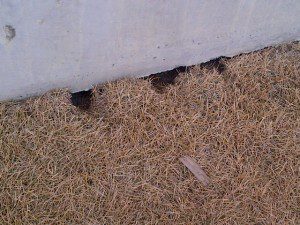Comprehensive Vole Pest Control Services in Utah
Comprehensive Vole Pest Control Services in Utah
Blog Article
Mastering Vole Pest Control: Comprehensive Insights on Invasion Prevention and Treatment Techniques
By acknowledging the refined indicators of vole invasion early on, we can take proactive actions to stop widespread damages. In this conversation, we will certainly discover the subtleties of vole actions, delve right into the recognition of infestation indications, and discover the most reliable avoidance and therapy techniques.
Understanding Vole Actions
Analyzing the foraging patterns of voles provides valuable insights into their habits and environment preferences. Voles, small rodents appearing like mice, are herbivores known for their below ground tunneling tasks. By observing their foraging behavior, researchers can obtain a much better understanding of where voles choose to establish their environments and the extent of their ecological effect. Voles are prolific dog breeders, with a single female efficient in producing numerous trashes in a year, making it crucial to understand their actions for efficient insect control techniques.
Study shows that voles exhibit careful feeding practices, liking origins, seeds, and tubers. This dietary choice affects their foraging patterns, leading them to areas abundant in greenery and ground cover. In addition, voles are recognized to develop sophisticated tunnel systems for foraging and nesting purposes, showing a high degree of flexibility to their surroundings.
Recognizing vole habits is necessary for executing targeted pest control procedures that disrupt their environment choices and foraging tasks (vole control utah). By researching their habits, specialists can create more effective avoidance and therapy approaches to handle vole problems

Identifying Indicators of Vole Problem
Vole problems can be discovered by identifying certain indications of their existence in an area. One of the most common signs of a vole invasion is the existence of surface area paths.
Another crucial sign of vole problem is the presence of little burrow openings in the ground. Voles dig superficial burrow systems with several entryways and departures. These burrows function as shelter and nesting sites for the voles. In addition, voles are recognized to leave chewed plant stems, roots, and light bulbs near their burrow openings, suggesting their feeding activity in the area.
Moreover, vole droppings can likewise indicate their presence. Vole droppings are small, brown, and round fit, resembling grains of rice. Finding these droppings along runways or near burrow openings can verify a vole problem. By being attentive for these indicators, property owners can quickly attend to vole invasions and avoid additional damage.
Executing Positive Prevention Steps

Moreover, using natural vole deterrents like castor oil-based repellents or predator pee can act as effective safety Continue nets. It is likewise recommended to regularly inspect outside rooms for any type of signs of vole task, such as paths or burrow openings, to resolve possible infestations promptly. vole control. By adopting these positive prevention techniques, residential or commercial property owners can dramatically decrease the probability of vole damage and maintain the health and visual appeals of their landscapes
Efficient Treatment Methods
Incorporating targeted trapping methods and making use of approved rodenticides are vital elements of reliable treatment strategies for handling vole infestations. Trapping can be an efficient means to reduce vole populations, especially this content when positioned tactically in their energetic runways. Break catches and live catches can both be effective, with the latter permitting the capture and moving of voles. When using rodenticides, it is essential to follow security guidelines to stop damage to non-target animals and pet dogs. Location rodenticides in secure lure terminals to lessen dangers to unintentional targets. Additionally, habitat modification, such as lowering ground cover and eliminating resources of food, can help deter voles from infesting a location. Normal tracking and upkeep are likewise key elements of successful treatment approaches to ensure that vole populations are maintained under control. By combining capturing, rodenticides, habitat alteration, and consistent surveillance, efficient vole insect control can be attained.
Tracking and Upkeep Tips
Routine surveillance official website enables for the early detection of vole task, enabling punctual treatment before problems get worse. To properly keep track of vole populations, tactically positioned catches can be utilized in vole runways or near burrow entries.
Additionally, maintaining a well-kept and neat landscape is essential in vole avoidance. Clearing away debris, such as piles of timber or dense plants, removes prospective vole habitats. Routinely trimming yards and trimming vegetation helps in reducing vole concealing places and minimizes their accessibility to food sources.
Moreover, recurring maintenance of physical barriers, such as fencings or wire mesh, is crucial to stop vole breach. Checking and repairing any kind of problems to these structures guarantees that vole control stays reliable in guarding residential or commercial properties from infestations. By incorporating these surveillance and maintenance practices right into an extensive vole bug control strategy, people can efficiently manage vole populaces and protect their residential or commercial properties from damages.
Final Thought
To conclude, mastering vole parasite control needs a solid understanding of vole actions, the capacity to recognize indications of infestation, executing proactive avoidance steps, reliable therapy strategies, and regular surveillance and maintenance. By taking a comprehensive strategy to vole control, people can efficiently handle and protect against infestations, ultimately safeguarding their property and bordering atmosphere from damages triggered by these tiny rats.
In this conversation, we will discover the subtleties of vole habits, dig right into the identification of infestation indicators, and reveal the most reliable prevention and therapy methods.Integrating targeted trapping methods and using authorized rodenticides are crucial elements of effective treatment methods for handling vole invasions. To successfully check vole populaces, strategically put catches can be utilized in vole runways or near burrow entrances. Examining and repairing any type of damages to these structures makes sure that vole control stays efficient in securing residential or commercial properties from invasions. By including these surveillance and upkeep practices right into a detailed vole bug control plan, people can efficiently handle vole populations and protect their properties from damage.
Report this page